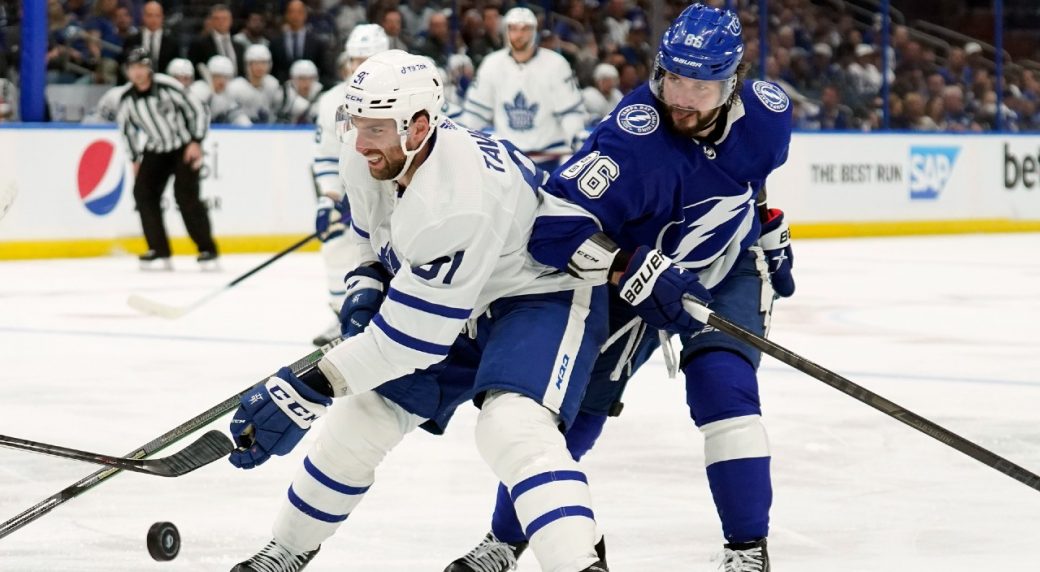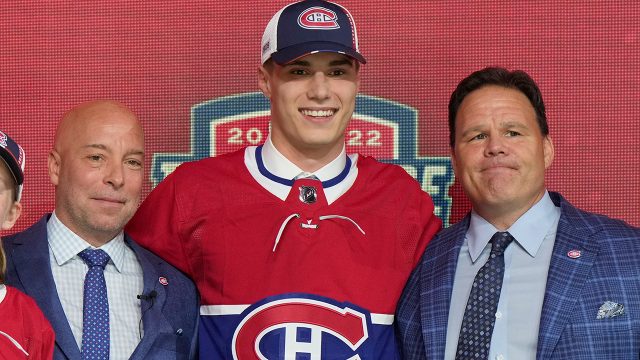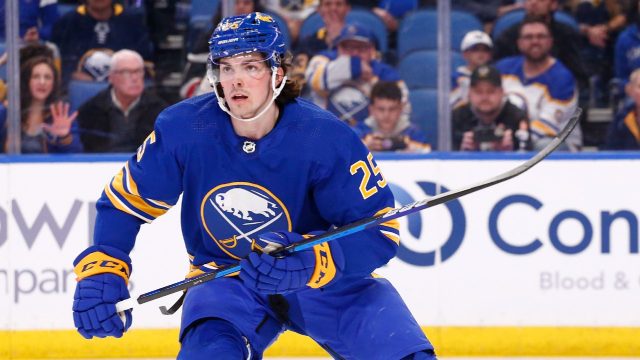When I kicked off my return to hockey writing last week, I started with what I found to be one of the most interesting pockets of the league: that would be the four teams that were the dregs of the Atlantic Division in 2021-22.
There was a clear divide between the division’s eight teams, with four (Florida, Toronto, Tampa Bay and Boston) being in the league’s top 10 with 107 points or more, and the other four (Montreal, Ottawa, Detroit and Buffalo) in the league’s bottom quarter, finishing over 30 points from a playoff spot.
Those bottom teams, however, had aggressive summers, apparently aiming to actually win hockey games in the near future. I expect each of them to be better and at roughly the same time – which I find interesting – and so I wrote as much.
What that article failed to mention was that the other bottom teams being better at that same time obviously hurts one another’s chances of taking a step up the standings. A team getting only a little better might actually see that team fail to keep pace and fall farther behind.
It also didn’t mention what to make of the teams who were once Cup contenders, who saw themselves eliminated from playoffs in the first round (Leafs), second (Panthers and Bruins), and Cup Final (Lightning).
Will the division be as strong? Are any of those teams significantly better, or weaker?
The answers here will have a big say in whether the bottom four teams have a chance to catch anyone, and if any of these teams have a chance to catch Colorado and actually win the Cup.
There was no shortage of moves, and each roster looks different. Let’s get into how, starting with the team that went farthest in playoffs, and working our way back.
I don’t think there’s much of a case to be made that the Lightning are going to be “better” in 2022-23.
That doesn’t mean they won’t be formidable, but salary cap concerns cost them Ondrej Palat, who’s been one of those sneaky “next-layer” players after the stars who’ve contributed massive value to their Cup runs. He tied for the team lead in playoff goals this past run, with 11.
They also traded Ryan McDonagh to Nashville (for D-man Phillippe Myers, and forward prospect Grant Mismash), and all McDonagh did last season was finish second on the team in ice time through their playoff run, averaging 22:26 per game. On top of that, the Bolts lost Jan Rutta to the Penguins, who had regularly been paired with Victor Hedman over the past couple seasons.
Still, what they did do was ensure they kept their most meaningful pieces.
They extended Mikhail Sergachev, Erik Cernak and Anthony Cirelli for eight years each. They also extended Nick Paul for seven years, and expect more from 24-year-old Brandon Hagel, who they acquired at the deadline. They’ve still got Steven Stamkos, Nikita Kucherov, Brayden Point, Hedman and Andrei Vasilevskiy. They added Vlad Namestnikov to pick up some of the slack, and they think there’s more there from young guys Ross Colton and Cal Foote.
What I see is a damn good proven team with the type of core that ensures it'll be competitive, and once again, hell to put away in the playoffs.
But roster-wise they’re probably a small percentage worse, and they won’t have Cirelli or Zach Bogosian until about December due to shoulder surgeries. A number of their players would’ve spent the start of the off-season rehabbing, including Brayden Point. I think there’s the possibility, after three straight Cup final runs, for a slower start to the season.
The reigning Presidents' Trophy champs took the opposite road from our next team, the Toronto Maple Leafs: after a crushing post-season defeat, they traded away a crucial core piece and flipped the look of their roster entirely.
Their version of “going for it” says they didn’t believe in the way they were built last year. Jonathan Huberdeau was fifth in Hart Trophy voting, and was shipped out alongside D-man MacKenzie Weegar, who put up over 40 points from the back-end.
You only do something so drastic if you believe fully in what’s coming the other way, and what’s coming back to them in Matthew Tkachuk, who had over 100 points last year to go with a more physical edge (a deciding factor, in my opinion, is why they valued him over Huberdeau).
So, it’s Huberdeau out, Weegar out, Mason Marchment signed with Dallas, Claude Giroux signed with Ottawa and Ben Chiarot signed with Detroit. With those names gone, they’ve added Colin White, Nick Cousins, Marc Staal, Anthony Bitetto and Michael Del Zotto (the latter two spent time in the AHL last season).
Tkachuk is a special player entering his prime, and a wonderful addition. Maybe that makes them better, or at least different, than a one-for-one swap with Huberdeau. After that, it’s almost impossible to argue they’ve improved this off-season (which would have been awfully hard after winning the Presidents' Trophy and the salary cap existing).
There’s still a ton of talent here and a very good team. But they got career-year output from a number of players last season (goal highs from Barkov, 39, Bennett, 28, Reinhart, 33, Verhaeghe, 24, and Duclair, 31, the latter of whom may miss most of the regular season with an Achilles tear).
Just about everything went right. Like Tampa, I’d say if anything, they’re a few percentage points worse when assessing just their roster.
It'll be up to arguably their biggest addition – head coach Paul Maurice – to ensure they’re built not just for regular season success, but for the playoffs.
Toronto Maple Leafs
Despite the howls and yowls from blood-thirsty jowls around Ontario, the Leafs are runnin’ it back, baby. Nothing could possibly go wrong.
Opposite the Panthers, there’s apparently front-office belief in this core of Auston Matthews, Mitch Marner, John Tavares, William Nylander and Morgan Rielly.
The Leafs are coming off 54 wins, finishing fourth in the regular season, before putting together a first-round performance heralded by many as “different” despite the same outcome as the previous five playoffs: a first-round knockout.
The Leafs lost starting goaltender Jack Campbell, who was either spectacular or atrocious, depending on which half of the season stats you cherry-pick, and Ilya Mikheyev, who was an impactful supplementary player.
In return, the roster additions look something similar to the season before, where the Leafs got a grab bag of cheap players in hopes that someone breaks out and has success.
Calle Jarnkrok is a reliable addition at an affordable price, though not really a needle-mover. Adam Gaudette is a potential breakout player with upside, and there’s hope that the dash-gang of Nicolas Aubel-Kubel and Zach Aston-Reese can provide a more high-energy, physical look at the bottom of the lineup, where the Leafs have typically housed older or punchier players. (If those guys hope to stick as the fourth-line guys, “dash gang” better refer to their last names only.)
The biggest change is that with Campbell gone and Petr Mrazek dealt to Chicago, the team has placed its bets on a bounce-back for Matt Murray (who’s coming off a .906 save percentage season, his best year since 2018-19), and Ilya Samsonov, who was an .896 last year.
Murray is just 28, but it’s hard to find many believers that he’ll be the guy to take this team over the mountain, and Samsonov seems like a lottery ticket at best (though with the lack of other options, it seems like they picked the best available lottery ticket, at least).
What the Leafs do have going for them is that last year, of the 16 teams who made the playoffs, only one had a team save percentage worse than Toronto’s .899 (22nd in NHL). The team was good without goaltending to begin with.
If Murray and Samsonov are just OK, the Leafs should be too.
The room for internal improvement seems small. The core was excellent last season, and in terms of prospects on the way, only Matthew Knies after his college season (or mayyyybe Nick Robertson?) strike as players who could be immediately impactful.
And so it goes: The Leafs were very good, and, provided good health, will be very good again. They believe that if they bang their head against the door long enough with this group, eventually the damn thing will open. And it may! It may, or they may concuss themselves in the process and give up once and for all. Stay tuned.
The Boston Bruins of tomorrow will look more like the Boston Bruins of yesterday, as both Patrice Bergeron and David Krejci have returned to provide a one-two punch down the middle. The newest face will be behind the bench, as Bruce Cassidy was let go in favour of Jim Montgomery. Still, the core and culture of that group should persist given Bergeron, Krejci, Brad Marchand, David Pastrnak and Charlie McAvoy are all returning.
The Bruins' biggest question mark past their aging core is a big one: Can they survive the first few months? Marchand had surgery on both hips, and will be out until at least December, and McAvoy had shoulder surgery, keeping him out just as long. Matt Grzelcyk had work on his right shoulder too, which will keep him out until at least November.
This feels like the situation the Islanders went through last year: the team had a brutal road trip while their new arena was being finished (and then immediately were hit by COVID) to start the year, and the vibe was that if they could just tread water long enough, they’d be fine once they got to have some home games and get healthy. But for the Isles, the season was too far gone before they could get there.
There’s no shortage of talent on the Bruins. It’ll still be Bergeron and Pastrnak and Taylor Hall and Krejci and Hampus Lindholm supplemented by Charlie Coyle and Jake DeBrusk and Brandon Carlo.
Between Jeremy Swayman and Linus Ullmark, I expect someone to give them saves. They won’t suddenly be bad, but it does feel like it could be a struggle at times in the early going. They’ll need a good year from Nick Foligno, and maybe something from Pavel Zacha, and a few D-men to exceed expectations.
They were the last team of the “big four” in the Atlantic Division this past season. I’d expect them there again, and if anyone from the bottom rises up, I’d imagine the Bruins are the first team they’re hoping to track down.
What this means for the rest
There’s good news in here for the bottom teams in the Atlantic. I can’t see a single team in the top half of the group that seems poised to be better, and that’s not exactly a knock.
We’re at the point where with years of a flat salary cap, the teams who’ve been competitive and trying to win Cups are having their hardest time retaining deep rosters. As the talent has gotten shorn off the top like a bartender clearing foam from a fresh pint, some of the good stuff has fallen to the teams down below.
It's one thing to rise to the top, but staying there in the NHL’s current economic environment is nearly impossible. That’s reflected in the best of this division, and with that, the games should be competitive and closer than ever.



